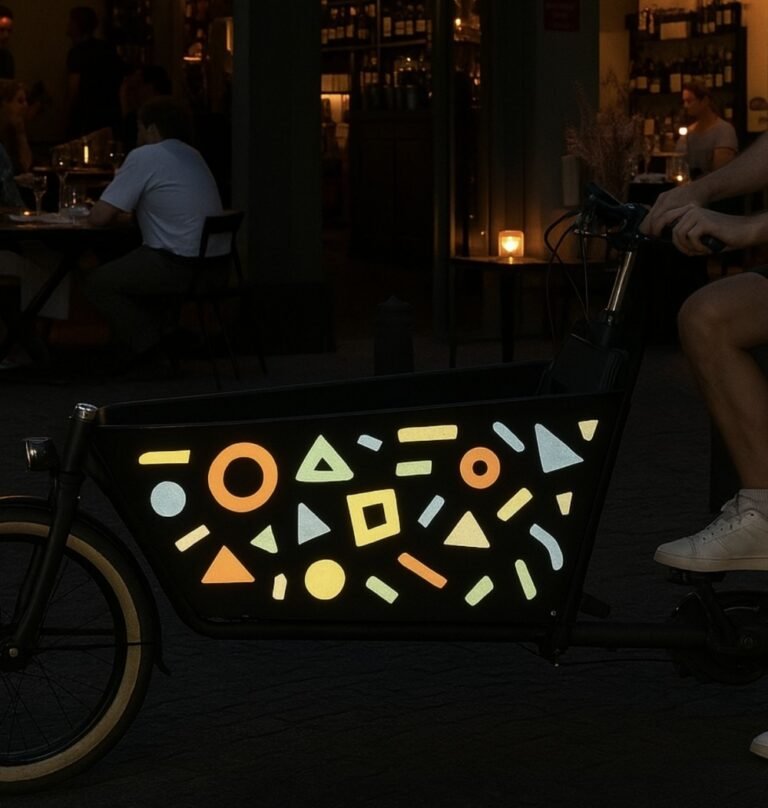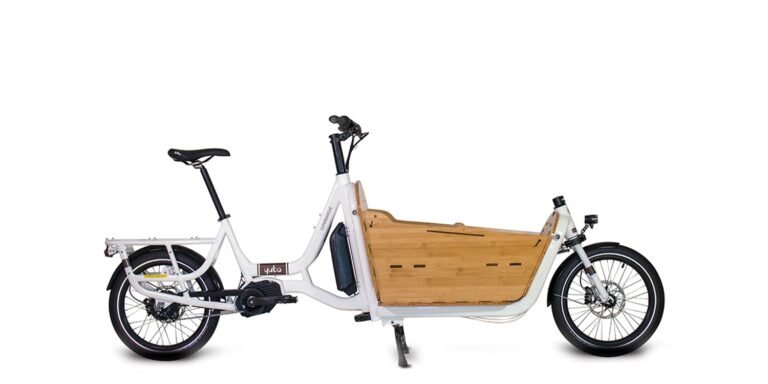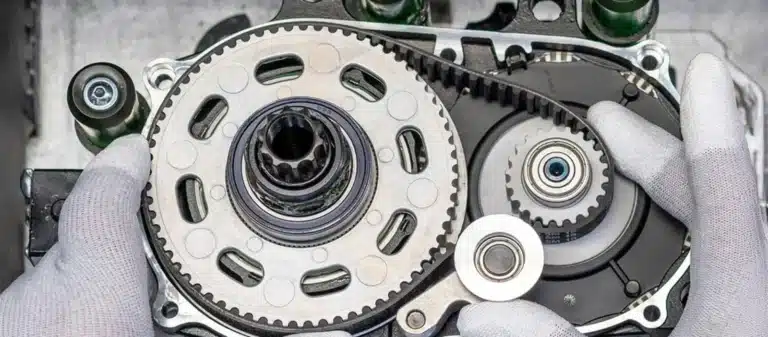As Regen, we often receive questions from customers and partners about torque sensors—what they are, how they work, and why they matter so much in e-bikes and cargo bikes. Torque sensors are one of those hidden components that you might not notice at first glance, but they fundamentally shape the riding experience, motor efficiency, and even the safety of electric-assisted bicycles.
In this article, we’ll explore torque sensors in detail: what they do, how they work, their advantages and disadvantages, and where they are used. We will also connect their role to broader cargo bike design considerations, such as motor torque selection and communication protocols within the electrical system.
What Is a Torque Sensor?
A torque sensor is a device that measures the amount of torque (rotational force) applied to a shaft or axle. In an e-bike or cargo bike, it is typically located in the bottom bracket, rear dropout, or crank spindle. When a rider applies pressure on the pedals, the torque sensor detects the twisting force and sends a signal to the motor controller. The controller then adjusts the motor assistance proportionally.
This differs significantly from cadence sensors, which simply detect whether you are pedalling or not, without measuring how hard you are pedalling. While cadence sensors tend to deliver a more binary, “on/off” assistance feel, torque sensors enable a smoother, more natural pedalling experience.
Definition:
Torque = Force × Distance (measured in Newton-metres, Nm).
If you apply 100 N of force on a 0.17 m crank arm, the resulting torque is 17 Nm.
2. How Do Torque Sensors Work?
Most torque sensors used in e-bikes and cargo bikes are strain gauge–based. Let’s break down the working principle:
2.1 Strain Gauge Method
- The crank spindle or axle twists slightly when the rider pedals.
- Strain gauges—tiny electrical resistive elements—are bonded to the spindle.
- As the spindle deforms, the strain gauges change resistance.
- These changes are amplified through a Wheatstone bridge circuit and converted into an electrical signal.
- The motor controller interprets this signal as the rider’s input effort and adjusts power output accordingly.
2.2 Magnetoelastic Method
Some high-end torque sensors use magnetoelastic principles:
- The steel in the spindle changes its magnetic permeability when under torsion.
- Magnetic field sensors detect these changes without physical contact.
- The benefit: less wear and tear, as there are no wires or slip rings on moving parts.

Diagram of an e-bike torque sensor
Torque Sensor vs. Speed Sensor : Which is better?
In simple terms, it is an experienced driver vs. an apprentice driver
You can use the analogy of an experienced driver driving and an apprentice driver driving:
Torque Sensor is like an “experienced driver”
- The experienced driver will smoothly control the vehicle power according to the road conditions and throttle strength:
- If going uphill, the throttle will be automatically increased (more motor assistance).
- If going downhill or lightly pressing the throttle, the power will be reduced (saving power and safety).
- The whole driving experience is smooth and natural, and the sense of security is strong.
Speed Sensor is like an “apprentice driver”
- The apprentice driver only has a general concept of the throttle switch:
- Once the throttle is pressed, full gas is given, regardless of the road conditions.
- The reaction is slow, and the throttle is either fully open or closed.
- It is easy to have abrupt acceleration and deceleration when riding, especially when loaded. It is unsafe.
Summary: Torque Sensor = on-demand intelligent output, Speed Sensor = fixed output (stop if no one is pressing, full power if pressing)
Torque Sensors (Pedal-Force-Based)
- Measure how hard you are pedalling by detecting the rotational force applied to the crank, bottom bracket, or rear dropout.
- Assistance is proportional: the harder you pedal, the more power the motor delivers.
Speed or Cadence Sensors (Pedal-Speed-Based)
- Measure if and how fast you are pedalling using magnets and a sensor on the crank.
- Assistance is binary/on-off: once you start pedalling and reach a set cadence, the motor kicks in with pre-set power (not proportional to force).
Key Differences Table at a Glance
| Recurso | Sensor de torque | Sensor de velocidade |
|---|---|---|
| Motor Response | Proportional to pedal force (natural and smooth) | Fixed power output once cadence threshold is met |
| Ride Feel | Feels like an amplified human effort (“bionic legs”) | Can feel jerky or sudden; less intuitive |
| Eficiência da bateria | Higher: only uses what is needed | Lower: can waste energy at times |
| Custo | Higher (more complex technology) | Lower (simple, cheap) |
| Setup | Requires precise installation and calibration | Very easy to install and replace |
| Best For | Premium e-bikes, cargo bikes, hilly or urban terrain | Entry-level e-bikes, flat terrain, casual riding |
Which Is Better for Cargo Bikes?
Para bicicletas de carga, torque sensors are almost always the better choice:
- Smooth Power Delivery: When carrying children or goods, you need stability at starts and stops. Torque sensors provide predictable, proportional assistance.
- Battery Efficiency: Delivery and logistics fleets benefit from longer range per charge.
- Control on Hills: Torque sensors make hill starts easier because the motor responds instantly to your force input.
- Segurança: Sudden surges of power from speed sensors can cause wobbling or even tipping in heavily loaded bikes.
(You can read our article on How much torque do you need for your cargo bike? to see how torque sensors tie into motor selection.)
3. Advantages of Torque Sensors in E-Bikes and Cargo Bikes
3.1 Natural Riding Experience
Because motor assistance is proportional to how hard you pedal, you feel as if you have “bionic legs.” The bike responds intuitively to your input, which is especially important for cargo bikes carrying heavy loads. Riders feel more in control at low speeds, when manoeuvring around obstacles, or starting uphill with children or goods onboard.
3.2 Efficient Battery Use
Torque sensors allow the controller to fine-tune the motor output:
- If you pedal harder, the motor delivers more power.
- If you ease off, the motor reduces assistance. This dynamic response helps conserve battery energy compared to cadence-based systems, where the motor may provide unnecessary power at times.
3.3 Improved Safety
In cargo bikes, sudden surges of power can be dangerous, particularly when fully loaded. Torque sensors prevent abrupt acceleration by matching motor output to rider effort. This makes starts and stops smoother and helps maintain stability.
3.4 Compatibility with Modern Controllers
Torque sensors integrate well with Barramento CAN or other communication protocols used in e-bike electrical systems. The data they provide can be shared with other components, such as display units and battery management systems, for optimised performance.
4. Disadvantages and Considerations
While torque sensors bring many benefits, they also have some drawbacks worth noting:
- Higher Cost: Compared to simple cadence sensors, torque sensors are more expensive due to their complexity.
- Calibration Requirements: They must be precisely calibrated to ensure accurate readings.
- Sensitivity: Because they measure micro-deflections, external vibrations and temperature changes can affect performance if not compensated.
- Potential for Wear (Strain Gauge Types): Over time, mechanical stresses can degrade strain gauge–based sensors, although this is rare with quality components.
For cargo bike OEM/ODM manufacturers like us, these factors need to be considered during product development. For example, we carefully select bottom bracket assemblies that combine durability with accurate torque sensing.
5. Applications of Torque Sensors
Torque sensors are used in a wide variety of industries, but their role in e-bikes and cargo bikes is particularly transformative.
5.1 Pedal-Assist Systems
- Torque sensors are the backbone of pedal-assist (pedelec) functionality.
- They make sure that power assistance feels natural and proportional.
5.2 Heavy-Duty Cargo Bikes
- For Long John, Longtail, and trike-style cargo bikes, precise torque feedback is essential for stability and rider confidence.
- Riders often carry children, groceries, or commercial goods; therefore, predictable motor support improves safety.
5.3 Fleet and Delivery Bikes
- Logistics companies rely on torque sensors to reduce rider fatigue and ensure consistent performance across various terrain and load conditions.
5.4 Other E-Mobility Applications
- Electric scooters and mopeds use similar sensors for throttle and regenerative braking control.
(You may also find our article on Ackerman steering mechanisms in cargo bikes relevant, as torque sensors and steering geometry work together to provide a stable ride under load.)
6. Comparison: Torque Sensors vs Cadence Sensors
| Recurso | Sensor de torque | Cadence Sensor |
|---|---|---|
| Motor Response | Proportional, smooth, natural | On/off, binary, less intuitive |
| Eficiência da bateria | High (optimised based on rider effort) | Lower (can waste energy) |
| Custo | Mais alto | Mais baixo |
| Preferred For | Cargo bikes, premium e-bikes, hilly terrain | Entry-level e-bikes, flat terrain |
Verdict: For cargo bikes, torque sensors are almost always the better choice because they deliver smoother starts and more efficient battery usage when carrying loads.
7. Integration in Cargo Bike Design
At Regen, we integrate torque sensors during the bottom bracket design phase, considering factors such as:
- Frame geometry: Stiffness around the bottom bracket area affects sensor accuracy.
- Motor torque levels: We match sensors to mid-drive or hub motors ranging from 60–100 Nm for most cargo bikes.
- Electrical architecture: Torque sensor data is processed alongside speed, cadence, and motor temperature information via CAN bus.
We also work closely with our engineering and industrial design teams to ensure the torque sensor assembly remains sealed against moisture and dust (IP65 or above). This is crucial for bikes used in urban logistics, where exposure to rain and debris is unavoidable.
8. Conclusion
Torque sensors may not be visible at first glance, but they are among the most important components in modern e-bikes and cargo bikes. They:
- Provide a more natural and responsive riding experience.
- Improve battery efficiency.
- Enhance safety, especially when carrying heavy loads.
As we develop customised cargo bike solutions for OEM/ODM clients, torque sensors are always part of the discussion. Selecting the right type (strain gauge or magnetoelastic), ensuring proper calibration, and integrating it with the rest of the electrical system are all critical steps to delivering a high-quality product.
If you’re considering a new cargo bike project and want to discuss torque sensors, motor selection, and overall ride feel, our engineering and ID team can support you. We offer free consultations via video, phone, or email to help you make the right decisions for your target market.
In the end
Do you want to learn more about integrating torque sensors into your next cargo bike project? Contate-nos to discuss your requirements. Our team at Regen specialises in OEM/ODM cargo bike solutions, from frame development to electrical system integration.







